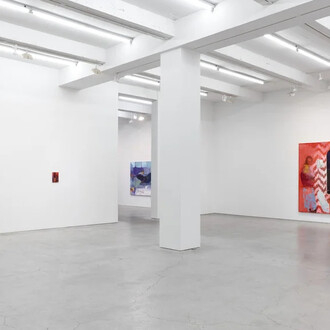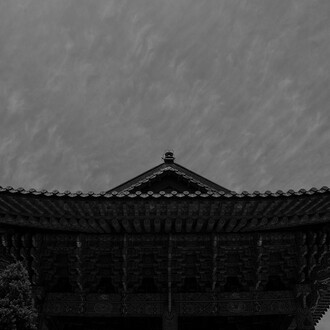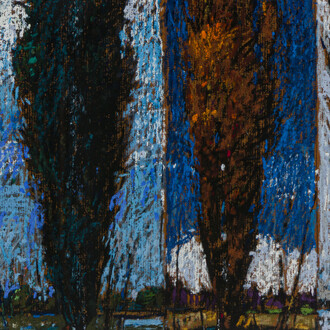Sikkema Malloy Jenkins is pleased to present a solo exhibition of new work by Arturo Herrera, on view in the front galleries from May 29 through July 25, 2025. The exhibition features a selection of cut-felt collages and a monumental wall painting in the gallery’s main space. An opening reception with the artist will be held on Thursday, May 29, from 6–8pm.
Arturo Herrera’s multimedia work engages the legacies of Modernism through the visual strategies of fragmentation, repetition, and reconstruction. “A divided body is richer and more complex than the whole figure,” he explains. His bold, layered compositions revel in the tension between what is revealed and what is concealed, and the mutability of images within different pictorial contexts. Painterly gestures and found imagery adjoin and overlap with flat abstraction and gaps in color, while the ghosted vestiges of bodily figures hint at a familiar presence. Like pauses in a piece of music, the intentional creation of space amongst forms becomes its own unit of meaning. This constant, active dialogue between ambiguity and legibility foregrounds the inherent relational concerns of Herrera’s practice: how the internal relationships between visual forms can provoke new and unexpected associations, emotions, and insights.
In his recent body of cut-out felt collages, Herrera continues to explore the essential nature of negative spaces when reading a work. These large-scale works are composed of a dense network of matte felt overlaid upon an acrylic or collaged abstraction. The apertures created by the felt fragments paradoxically expose the larger work concealed beneath, which cannot ever be experienced in its totality. It is precisely this dependent relationship between the opaque felt cut-outs and the underlying compositions that energize the works in a reciprocal manner.
Moving through the exhibition, a large monochromatic painting sets in motion the entire south wall of the main gallery, continuing the dynamic interplay between positive and negative spaces. In these massive abstract fields, the wall itself—the painting’s canvas—becomes integrated within the composition, dissolving and reappearing amongst a tangle of form and void. The painted shapes are echoed in the felt pieces and vice versa, activating the entire site and foregrounding the experience of personal encounter as each viewer moves and positions themselves in relation to the works in space.
Herrera’s photographic works are based on found photographs taken in Italy in the 1960s, showing general impressions and snippets of typical sightseeing locales throughout the country. The silk-screened black shapes cast by Herrera over the images of churches, sculptures, and ruins allow them to be seen anew. Along with the cut-out felt collages, the series of twenty-four photographic works reflects the artist‘s engagement with a type of “contaminated abstraction,” through the use of found materials and popular imagery.
















